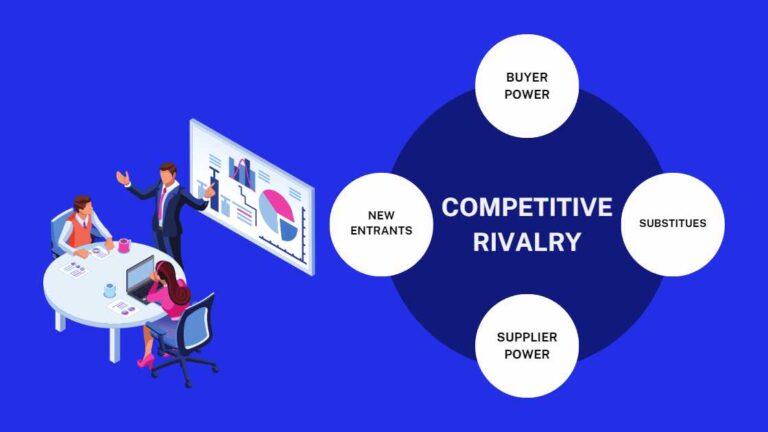Mergers and acquisitions are among the most talked-about subjects in business. They have been the subject of many articles and scholarly studies.
In this article, we will discuss what is a merger and acquisition, how does it helps company to achieve its objectives and stages of merger process.
What is Merger and Acquisition?
Merger is defined as the combining two businesses into one through business combination agreement. When two businesses merge, they combine into one entity that is greater than the sum of its parts.
Acquisition is defined as the purchase of one business by another through business combination agreement.
Merger and Acquisitions are two different processes that can be used to consolidate or buy a company.
History of Merger and Acquisition
The history of merger and acquisition can be traced back to the early days of business. The first recorded merger was between two shipping companies in 1708, for monopoly over the Indian trade. In the early 1800s, there was a wave of consolidation in the US banking industry. And in the late 1800s, there was a wave of mergers in the US steel industry.
The history of merger and acquisition really picked up in the 20th century. There were a number of large-scale mergers, such as the merging of Exxon and Mobil in 1998 and the merger of AOL and Time Warner in 2000.
The 21st century has seen its fair share of mergers and acquisitions as well. Some notable examples include the merger of Idea Cellular and Vodafone in 2017 and the acquisition of WhatsApp by Facebook (now Meta) in 2014.
How merger and acquisition can help a company achieve its objectives?
While there are many different types of mergers and acquisitions, they all share one common goal: to help a company grow. There are many ways in which merger and acquisition can help a company achieve its objectives.
- One way is by providing the company with access to new markets and customers. By merging with or acquiring another company, a company can quickly gain a larger share of the market. This can be especially helpful if the two companies operate in different geographical areas.
- Another way is by increasing the company’s production capacity or by providing the company with new technology or products.
- Additionally, merger and acquisition can also help a company increase its efficiency and reduce its costs.
- By combining forces with another company, a company can gain access to new ideas and technologies that it may not have had access to before. Additionally, acquiring another company can also help a company gain access to new talent.
- Lastly, companies often pursue mergers and acquisitions as a way to diversify their businesses. By acquiring another company that operates in a different industry, a company can reduce its dependence on any one particular industry. This can help protect a company from downturns in any one particular industry.
The problem with merger and acquisition
The problem with mergers and acquisitions is that they often don’t work out as planned. A study by Harvard Business Review found that failure rate of of mergers and acquisitions is between 70% and 90%. But, why does mergers and acquisitions fails.
- Failure to establish objectives:
Even though management have a clear idea about why they want to acquire or merge, it is very important to set out clear objectives for the same. This will help in short-term as well as long-term goals and help the management to decide what goal is more important at that moment. - Too little foresight:
Another problem with mergers and acquisitions is too little foresight into future of the business. When the companies merge their resources, there is no guarantee that things will work out as planned especially in case of drastic changes of market conditions. - Involved in multiple cases at once:
Another reason why mergers and acquisitions fails is that the companies involved are too busy to pay attention to what is happening with the mergers and acquisitions. They rather focus on their core business and let the experts handle the case of mergers and acquisitions. - Incomplete due diligence:
Due diligence is a critical part of mergers and acquisitions because it helps in evaluating the target company accurately so that companies know exactly what they are getting into when the deal is made. But many times due diligence is incomplete or simply ignored resulting in failure of the merger as well as acquiring business. - Lack of alignment:
Lack of alignment between strategic goals of two companies may lead to failure of the deal which will further lead to failure of the acquisition. - Poor planning:
Lack of proper planning is a very common mistake that companies do while going for an acquisition. Proper planning not only helps the company in doing the due diligence but also helps them in accurately estimating the cost of the deal, it will help the firm in getting the funds and gain shareholders approval as well as make the exit strategy properly clear to everyone involved in the deal. - Failure to align resource allocation:
One major aspect of a merger or acquisition is that it changes the balance of power between stakeholders, which is why it is very important to allocate the right resource in the right place.
Stages of Merger Process:
The merger process generally consists of following stages:
- Define Corporate Strategy:
The corporate management team should formulate a strategy that would drive overall business. If the chosen strategy is to acquire other businesses, the management should prepare a detailed plan on how to enter into merger and acquisition activities. The plan should include key factors such as:- Find potential target companies
- Prepare financial analysis
- Plan for negotiations
- Develop exit strategies
- Create plan B if deal reject
- Create communications strategy
- Evaluate Potential Targets:
The next step is to find potential target companies in need of an acquisition or merger to grow their business opportunities and expand operations globally. At this stage, it is important that management locate the best possible match for their company through:- Market survey and data analysis
- Contact with industry experts
- Networking
- Evaluation of growth potential
- Analyze the Merger:
The next step is to evaluate whether a merger will be a viable strategy for the business and make sure that they have the necessary resources to move forward. The following are crucial factors for evaluation:- Internal factors (organization, size, industry)
- External factors (market trends, competitors and target company)
- Negotiate Acquisition Pricing:
This is typically one of the most stressful parts of the process as there are so many factors that can influence the ultimate price that both parties agree upon for an acquisition transaction to go through. However, it is also one of the most important steps as this is where decision makers will determine how much money is at stake and the potential payoff for their company.
Here are a few tips to keep in mind:- Determine the fair market value of the target
- Evaluate all costs associated with the transaction (along with taxes)
- Include details on how the company will finance the buyout
- Reach a Deal and Implement the Vision:
The final step is to draw up an agreement, including a purchase offer, terms and conditions, and contract clauses that both parties will agree upon. This includes financing arrangements, management decisions and ongoing communication between both parties throughout the acquisition process. Once the companies reached an agreement, it’s time to close the deal and integrate the target company into their operations.
It can take up to 12 months or more for a merger or acquisition to be complete. Financial quarters will pass before the companies see any measurable results from the transaction.
Doing due diligence during the pre-purchase phase will help reduce the risk of failure and allow the company to focus on what matters most: delivering results.
Conclusion
In business, the term “merger” refers to the joining of two companies into one. The word “acquisition” typically means that one company has bought another company and now owns it.
Mergers and acquisitions can be an effective way for companies to grow. However, mergers and acquisitions often involve extremely complicated business and financial transactions. A company should always consult with a qualified attorney before pursuing a merger or acquisition.




